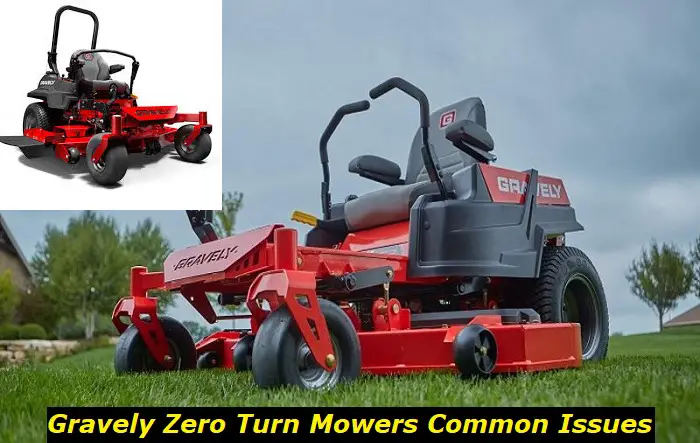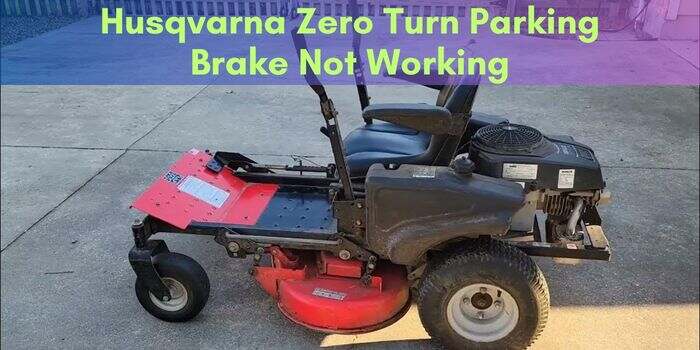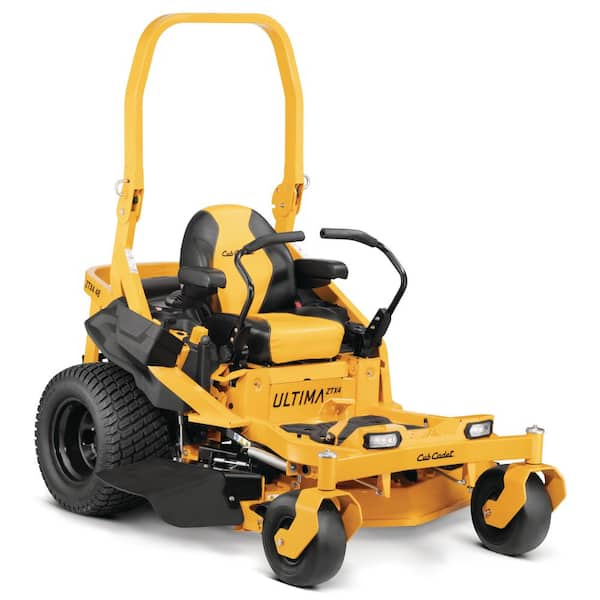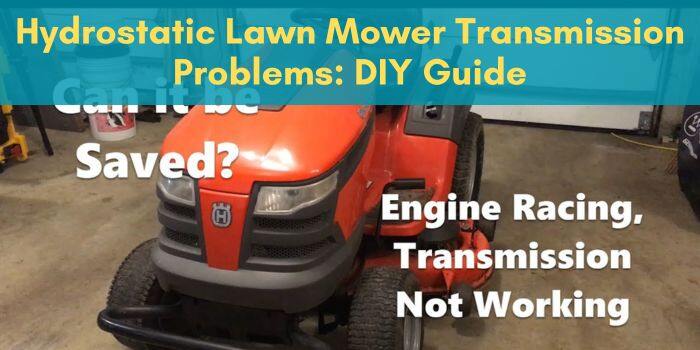Why Won’t My Lawn Mower Start After Winter?: Quick Fixes!
A lawn mower may not start after winter due to stale fuel or a depleted battery. Poor maintenance or a clogged carburetor can also cause starting issues.
After months of hibernation, your trusty lawn mower might stubbornly refuse to wake up. As seasons change, the transition from cold to warm weather can affect your lawn care equipment.
Old gasoline left in the tank is often the primary culprit, breaking down and leaving gummy residues that clog the fuel system.
Meanwhile, batteries drain and lose charge over time, especially in the cold, potentially leaving you with insufficient power to turn over the engine.
Regular maintenance can help prevent these common post-winter woes, but even the best care sometimes falls short in the face of prolonged inactivity.
As you prepare to tame your lawn for the new season, understanding these potential hiccups will guide you toward the common solutions that’ll get your mower running again.
Seasonal Hibernation
As spring rolls in, excitement builds for the first lawn cut of the season. Yet sometimes, mowers refuse to wake from their winter slumber.
Understanding the common hurdles that prevent your lawn mower from starting can save you time and frustration. Let’s jump into what happens to your mower during its winter break.
The Cold Snap Effect
Cold weather can be tough on lawn mowers. Dropping temperatures affect your mower in multiple ways:
- Fuel thickens, which makes it harder for your engine to start.
- Battery power depletes because cold temperatures drain batteries faster.
- Oils congeal, causing poor lubrication within the engine upon startup.
A winterized maintenance routine before storing your mower can help prevent these issues.
Impact Of Dormancy On Engines
Lawn mower engines, just like bears, don’t enjoy being dormant. Let’s delve into why:
- Condensation can cause moisture buildup in the fuel system, leading to corrosion or blockages.
- Stale fuel can gum up the works since fuel deteriorates over time, clogging the carburetor.
- Spark plug degradation might occur, as the plug’s effectiveness diminishes when not in use.
Prevent engine issues with regular check-ups and proper storage methods.
Initial Inspection
Welcome back to springtime, and with it, lawn care season. Your mower has been resting for months, and now, it’s time to wake it up.
Before you pull the start cord, a thorough initial inspection is a must. Let’s dive into the checks to ensure your lawn mower starts smoothly after its winter hibernation.
Checking For Obvious Blockages
Start with a visual scan of your lawn mower. Look for clogs of leaves, grass, or debris that might have built up over winter.
These can block air filters, exhausts, or even the blade area. Clear out any blockages you find with gloves or a brush.
Fuel Levels And Quality
Fuel can degrade over time, leading to starting problems. Check the fuel level first; if it’s low, fill it up with fresh gas.
If there’s old fuel in the tank, consider draining it. Use a fuel stabilizer to help preserve fuel quality in the future.
- Drain old fuel with a siphon pump.
- Refill with fresh gas.
- Add a fuel stabilizer to extend fuel life.
Fuel System Troubleshooting
Fuel system issues often cause lawn mowers to fail to start after winter. A period of inactivity can lead to fuel problems.
Let’s troubleshoot and fix common fuel-related issues.
Cleaning The Carburetor
The carburetor is crucial for the engine. It mixes fuel with air to create a combustible mixture. Over winter, old fuel can leave a residue that clogs the carburetor.
- Shut off the fuel valve.
- Remove the carburetor bowl.
- Clean it with carburetor cleaner.
- Clear out the jets and check for blockages.
- Reassemble and test your mower.
Changing Outdated Fuel
Stale fuel is a common problem after winter. Gasoline can degrade over time and lose its effectiveness.
- Drain old fuel from the tank.
- Dispose of it safely following local regulations.
- Fill the tank with fresh fuel suited for your mower.
Remember fresh fuel can make a huge difference. It ensures your mower runs smoothly and starts without issues.
Battery And Electrical Checks
Waking up your lawn mower after winter should be easy. But sometimes, it doesn’t roar to life.
The problem often lies in the battery or the electrical system. Let’s dive into simple checks to bring your mower back to action.
Testing Battery Voltage
A weak or dead battery is a common culprit. A simple voltage test can tell you if it’s time for a charge.
- Turn off the mower.
- Locate the battery.
- Use a multimeter to check the voltage.
Battery voltage should read around 12.7 volts. Less than 12 volts means it’s time to recharge or replace.
Inspecting Spark Plugs
Faulty spark plugs can stop your mower cold. Over winter, they can corrode or become dirty.
| Step | Action |
|---|---|
| 1 | Disconnect the spark plug lead. |
| 2 | Remove the spark plug using a socket wrench. |
| 3 | Check for rust or debris. |
| 4 | Clean or replace if necessary. |
| 5 | Reattach the spark plug lead securely. |
A clean, well-connected spark plug ensures a smooth start for your lawn mower.
Oil And Lubrication
Addressing the challenges of a post-winter lawn mower start-up often leads to examining oil and lubrication. Like blood in the human body, oil ensures the smooth operation of the mower’s engine.
After the winter months, oil can thicken, parts can become less lubricated, and the mower refuses to roar to life.
Let’s investigate the importance of oil viscosity and proper lubrication to prevent such starting issues.
Assessing Oil Viscosity
The consistency of your lawn mower’s oil plays a pivotal role. Thick oil hinders smooth movement. A quick check can save you from a starting headache:
- Locate the oil dipstick.
- Remove it and wipe it clean.
- Dip and check the level and texture.
Thick, gloppy oil can stall your mower. A change might be due.
The Need For Fresh Lubrication
Lubrication is crucial. Your lawn mower’s engine consists of many moving parts. These parts must move freely. Without proper oil, they rub, grind, and wear each other down.
- Reduces friction
- Minimizes wear and tear
- Helps prevent rust
Changing the oil could be the revival your mower needs. Remember to choose the right grade for your machine. Check the manual if unsure. Refreshing the lubrication keeps your mower starting smoothly, ensuring a lush, well-maintained lawn.
Air Flow Issues
Has your lawn mower been hibernating all winter? It’s time to wake it up! An often overlooked culprit for a stubborn lawn mower is air flow restriction.
Your lawn mower needs to breathe, just like you do. In the spring, a lawn mower that won’t start might simply be gasping for air.
Examining The Air Filter
Let’s start with the air filter, the lung of your lawn mower. A clogged or dirty filter traps dirt and debris preventing proper air flow.
A choked lawn mower will sputter and refuse to start. So the first step? Check that air filter.
- Turn off the mower and remove spark plug.
- Locate the air filter housing.
- Take out the filter and inspect for dirt.
If it’s dirty, replace it. You can clean some filters with mild dish soap and water. Remember, a clean filter means a happy and healthy lawn mower.
Clearing Ventilation Paths
It’s not just the filter, though. Your mower’s whole breathing system needs a clear path. Let’s do some spring cleaning for those ventilation paths.
- Check the carburetor and exhaust for blockages.
- Remove any dirt, leaves, or grass that might be stuck.
- Ensure clear passages.
It’s simple: clear paths mean easy starts. With the airways open, your lawn mower is ready to get back to work. No more frustrating pull-cord workouts!
Blades And Cutting Mechanism
When your lawn mower refuses to start after winter, the problem might be with the blades. A mower’s blades play a crucial role in the starting process.
Without properly maintained blades, your mower may struggle to turn on or perform poorly. This section looks closely at the blades and cutting mechanism to pinpoint issues that may prevent your mower from starting.
The Role Of Blades In Starting
Mower blades must be free of obstructions for the engine to kick over. Residue and debris from last season can cause the blades to stick.
These tips ensure blades are ready:
- Inspect blades for clogs and clean them.
- Check for corrosion or damage.
- Ensure they move freely and are not jammed.
Sharpening For Better Performance
Sharp blades are tantamount to a mower’s health. Dull blades can strain the engine, leading to start-up issues.
Follow these steps for sharpening:
- Secure the mower and remove the blades.
- Use a file or grinder to sharpen the edges.
- Balance blades before reattaching them.
A sharpened blade cuts grass effectively and helps the mower start without strain.
Professional Help And Services
Your lawn mower won’t start after winter. You’ve checked the basics but still no luck. It’s time to consider professional help. Experts can solve complex issues that often arise from prolonged storage.
When To Call In The Experts
Recognizing when to seek help is key to lawn mower care. Consider these scenarios:
- Strange noises or smells when attempting to start.
- Repeated failure to ignite, despite troubleshooting.
- Visible damage to parts that require professional tools.
Call professionals if these issues persist. They will diagnose and fix the problem efficiently.
Benefits Of Regular Maintenance
Regular maintenance offers several advantages:
| Benefit | Details |
|---|---|
| Longevity | Increases lifespan of your lawn mower. |
| Reliability | Ensures consistent start-up and operation. |
| Performance | Maintains optimal cutting efficiency. |
| Cost Savings | Prevents costly repairs due to neglect. |
Schedule regular check-ups to avoid sudden malfunctions. Professionals can keep your mower in top condition.
Preventive Measures For Next Winter
With winter fading away, you might face lawn mower issues. Let’s ensure the next cold season doesn’t leave your mower cold and unwilling to start. Follow these vital steps and greet spring with a mower that’s ready to roar to life.
Proper Winterization Techniques
Caring for your lawn mower before winter ensures a smooth start afterwards. Focus on these techniques:
- Drain fuel: Empty the tank or add a stabilizer to prevent degradation.
- Change oil: Replace old oil to avoid starting problems in spring.
- Clean or replace filters: Air and fuel filters need attention to keep the engine healthy.
- Inspect spark plug: A crisp spark plug means a happy engine come warmer days.
- Sharpen blades: Sharp blades cut cleaner and reduce strain on the mower.
Seasonal Storage Tips
Where you store your lawn mower impacts its post-winter performance. Keep these tips in mind:
- Choose a dry, sheltered space to avoid rust and corrosion.
- Cover the mower to shield it from dust and pests.
- Elevate the mower off the ground to prevent moisture damage.
- Disconnect the battery, to help preserve its charge and life.
- Check on the mower periodically, looking out for any issues.
Frequently Asked Questions
How Do I Get My Lawn Mower To Start After Sitting All Winter?
To start a lawn mower after winter, replace old gasoline with fresh fuel. Check the oil level and add if necessary. Inspect the air filter for debris and clean or replace it. Ensure the spark plug is functioning and the battery is charged, if applicable.
Pull the starter cord or turn the ignition key.
What Is The First Thing To Check If A Lawn Mower Won T Start?
Check the lawn mower’s fuel level first to ensure it has enough gas to start.
How Do You Unclog A Carburetor On A Lawn Mower?
Remove the air filter and access the carburetor. Disassemble the carb and clean the parts with carburetor cleaner. Reassemble and test the mower.
Why Won't My Lawn Mower Start If Left Outside?
Exposure to rain or dew can cause a lawn mower’s engine to flood or spark plug issues, preventing it from starting. Moisture can also corrode electrical connections and fuel system components. Keep your mower covered or stored indoors to avoid these problems.
Conclusion
Wrapping up, tackling a stubborn lawn mower can be frustrating. By troubleshooting common issues, you stand a better chance at a quick fix. Regular maintenance is key. Embrace these tips to ensure your mower roars to life with ease come spring.
Thank you for following our guide – happy mowing!






